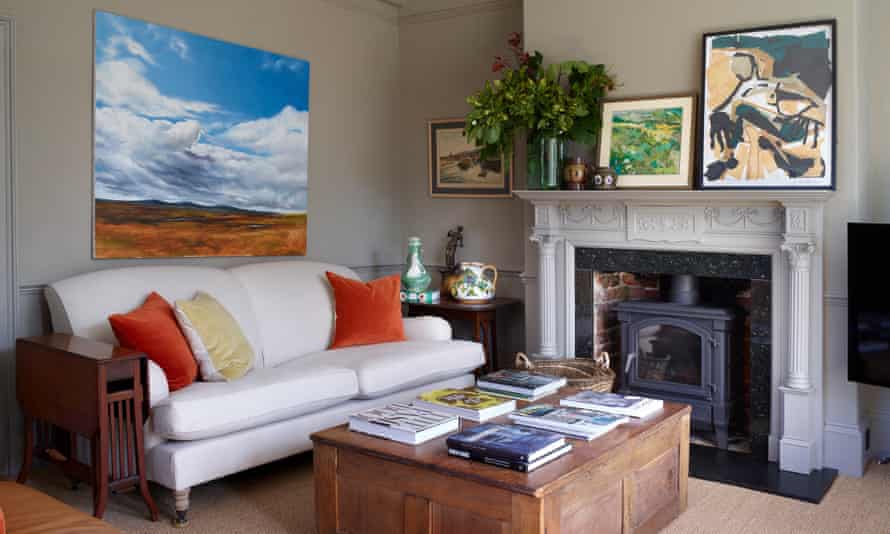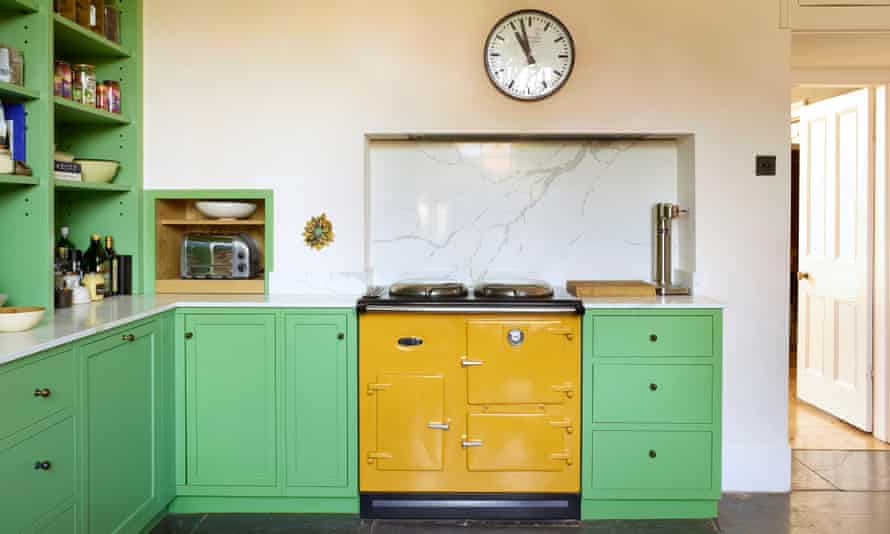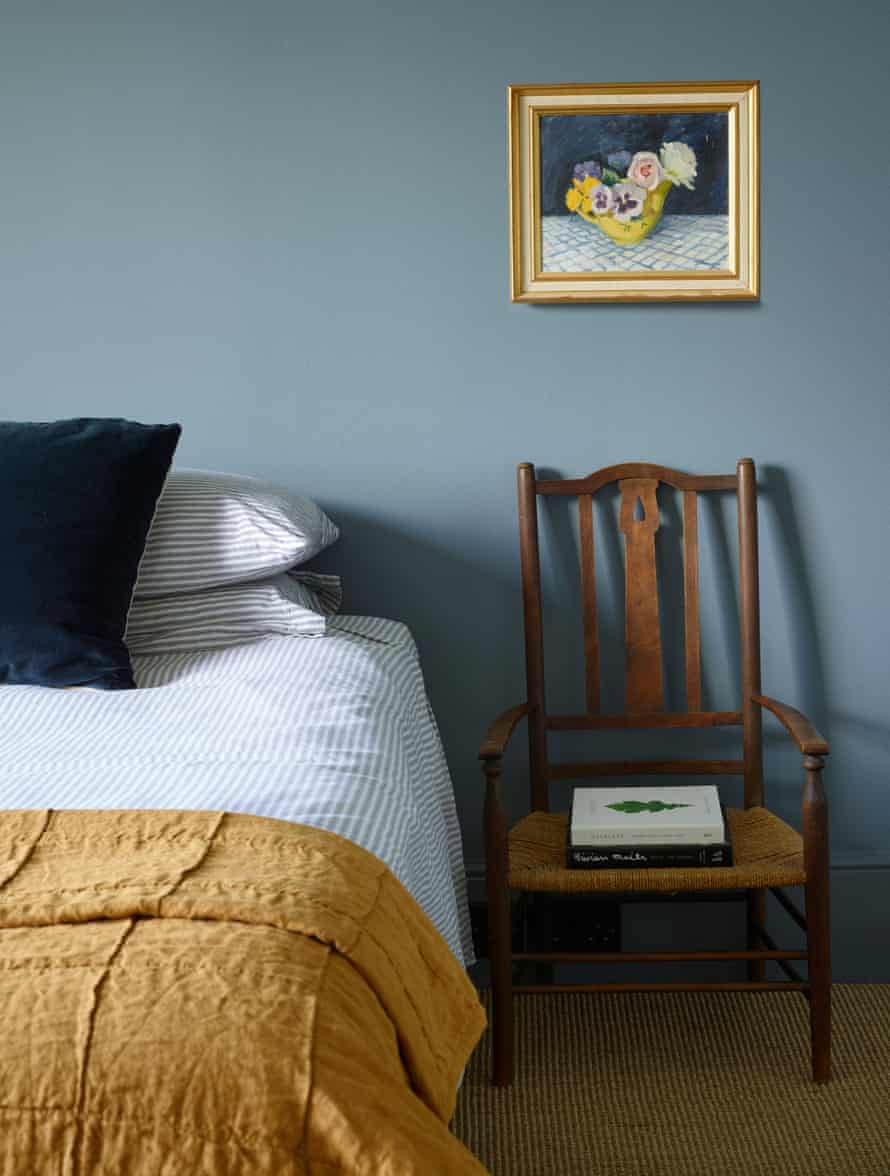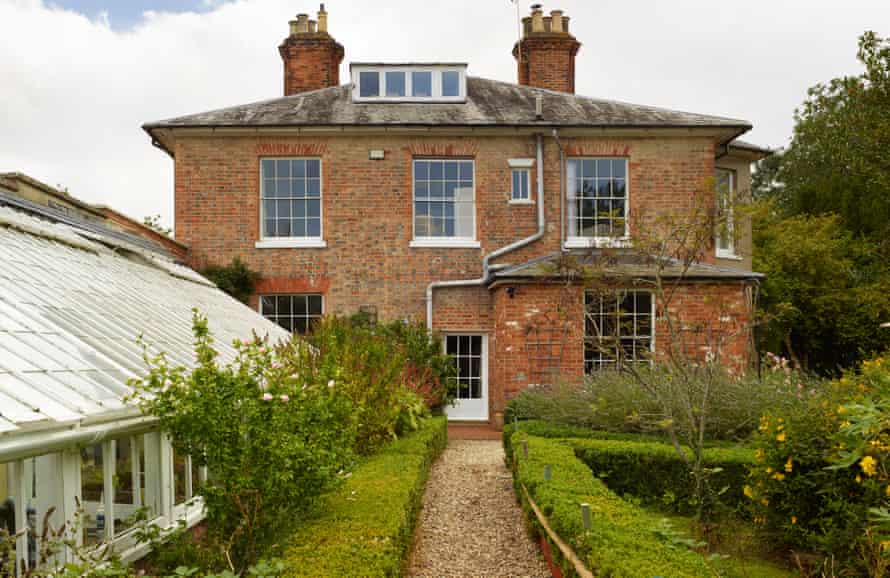
Imagine, if you will, that you picked up a painting of an unknown but beautiful rural British landscape by chance 40 years ago in a French flea market near to where you were raising your young family. You loved it, so you’ve hung on to it all these years, moving it from wall to wall, house to house, country to country. Fast forward to 2021, you take it to be reframed in Oxfordshire where you have recently relocated and realise the scene you’ve been looking at all these years is the very town to which you have moved.
“I kid you not,” says Suzie de Rohan Willner as she relates the tale at the detached Georgian house
that she and her husband, Stephen, now call home in Wallingford.
Having passed through the town many years ago and agreeing wistfully that it would be a place they would like to live one day, when it came to making a move from London in 2020, fate would once again play its part in the place capturing de Rohan Willner’s attention.
“Stephen took me for a surprise drive and we stopped outside the house with a for sale sign,” she explains. “In that moment, the owner came home and went into his drive and I said, ‘We’re so sorry, we’re just looking at your house’. He said, ‘Give me five minutes to clean up and then you must come in!’ We walked through the house, saw a magnificent Victorian greenhouse against the garden wall and it was love at first sight.”

Like a lot of families, the couple relocated from central London at the start of the pandemic in 2020, but it had been at the back of their minds for some time. As CEO of the clothing, homewares and lifestyle brand Toast, de Rohan Willner has a full-on, full-time job and was looking for somewhere to “slow down”.
“It’s been life-changing… I don’t see myself moving back,” she smiles. “Because we moved during lockdown, we didn’t meet anyone, but once the community opened up, I’ve never been welcomed anywhere like we have been in Wallingford.” Both her children and their families have also moved close by, while her octogenarian mother, Joy, lives in an extension attached to the side of the house. And so, after her 90-minute commute from London, they regularly gather as a family to spend evenings and long weekends together; which is not to say that she doesn’t bring work home at all.

De Rohan Willner talks a lot about an appreciation of time, a sentiment congruous with her role as the driving force of a brand that under her watch has become a major player in bringing renewed respect of slow fashion and handcraft to the British high street.
“There’s nothing more stimulating than surrounding yourself with craftsmanship, because it prompts you to think about the person who made each piece,” says de Rohan Willner, pointing to a basket by Julie Gurr, wooden cutlery by Takahashi McGil and a Viv Lee vase from Toast. They are all alumni of the New Makers programme she established in 2018 as a platform for craftspeople. She invests in one special piece for her home each year. “It inspires me. These pieces prompt me to think about the team and the huge effort they put in.”
The house sees Toast textures mingle naturally with de Rohan Willner’s prized possessions. Family portraits painted by her former mother-in-law, Vesla Stranger, and a huge landscape on canvas by her late stepfather, the sculptor William George Mitchell, hang in the living room; Art Deco ceramics that she inherited from her grandmother rest on a nearby table; and a vintage Marilyn Monroe poster hangs in the hallway. They all help create an artistic mix that befits a collector of craft that she says has followed her around. “My style hasn’t really changed,” she says. “From when I was studying French literature in Paris all the way through to today.”
De Rohan Willner’s time spent in France bears sentimental influence on this house. After graduating she headed south, where she raised her family in the Var, and the Farrow & Ball emerald green of her kitchen cabinets is reminiscent of Riviera shutters. They are met with walls painted in an eco-lime paint by Bauwerk to give a multidimensional finish synonymous with walls in the south of France. “It ages so well,” she explains. “You can see the handwork, so there is a texture to the wall. When the light shines in, it’s gorgeous.”

Elsewhere, a portrait of herself sits atop a shelf, and a chandelier picked up on a hop across to the legendary Jeu de Balle market in Brussels hangs above the table. The Gallic influence stretches into the garden, where the spectacular hibiscus-draped greenhouse stands in splendour. “In summer, we eat in there as much as possible on trestle tables, it reminds us of France.” The vine that runs through it “hangs heavy” with bunches of grapes that the couple gift to friends who reciprocate by returning it as jelly.
The bones of the house, she says, were already good. The flagstone flooring, sunshine-yellow Aga, roll-top bath and traditional doorknobs she makes a point of noting were all inherited, as were the wooden blinds she had repaired. “I love taking the time to close them all in the evening, imagining people over time doing the same. It’s a beautiful ritual.”
Upstairs, the couple’s easy way with mingling secondhand finds with new acquisitions stretches into their shared dressing room where a kilim rug de Rohan Willner sourced sits beside an old shop cabinet she picked up in an antiques shop in Islington. “I like mixing old and contemporary within that,” she says. “If you don’t try, everything fits together because you’re just buying what you love.” If it’s meant to be, it’s meant to be.
For more information, go to toa.st



